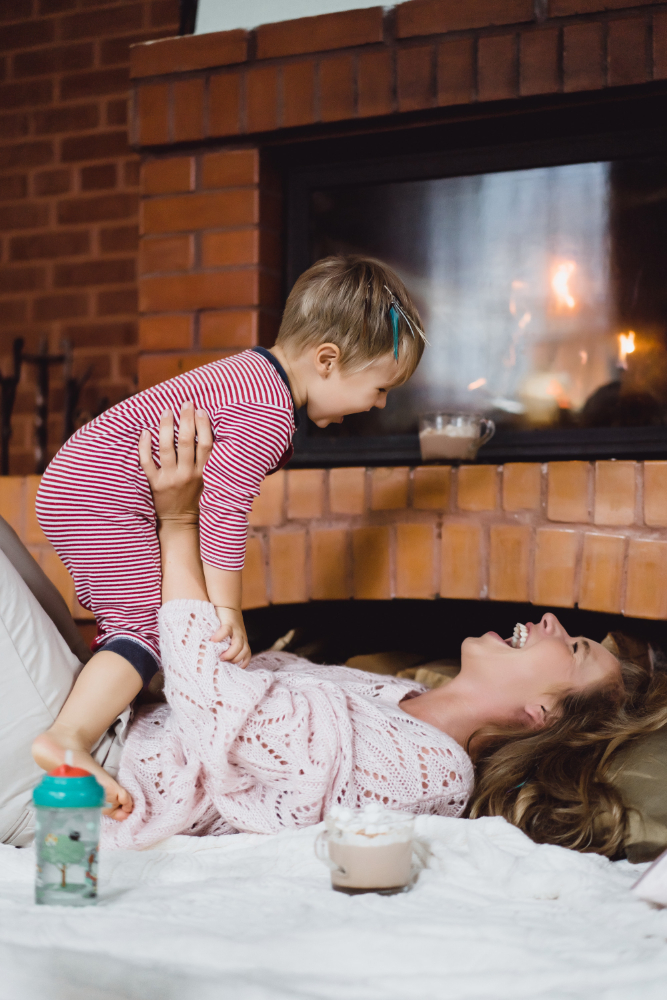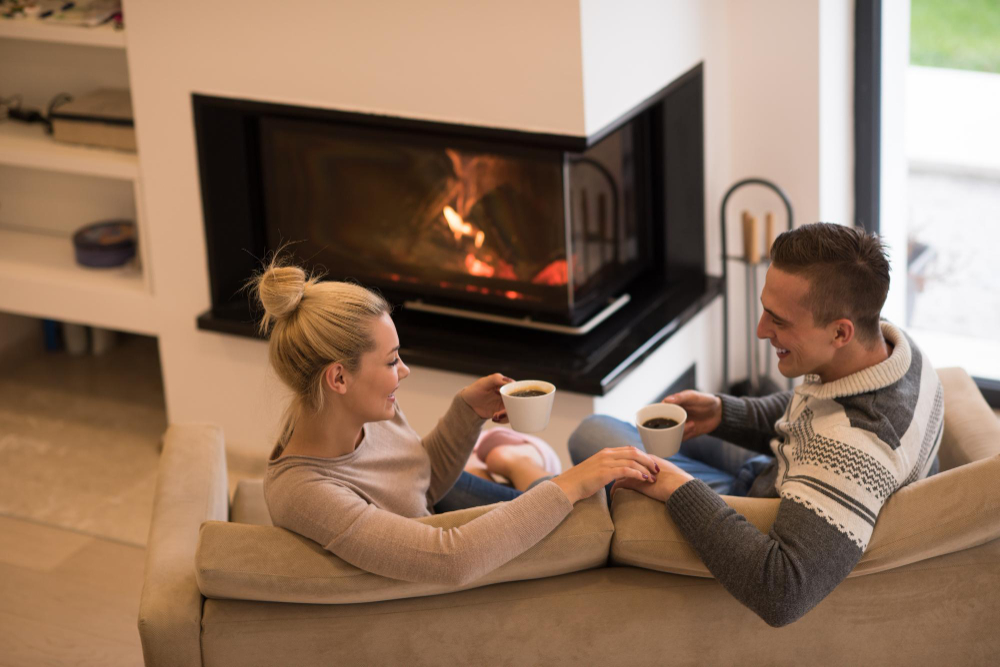Last updated on
When winter approaches and the temperature drops, nothing is quite as inviting as the crackling sound and mesmerizing glow of a fire in the fireplace. The warmth it exudes, both physically and emotionally, brings comfort and satisfaction to our homes. However, as we create that cozy ambiance, it is crucial to prioritize safety above all else.
Maintaining a well-functioning indoor fireplace and following proper safety guidelines is paramount to prevent potential hazards and ensure a secure and serene environment for ourselves and our loved ones. This handbook will explore the essential components of building and maintaining a safe fireplace, from selecting suitable firewood to implementing regular maintenance routines.
Evaluating Your Existing Fireplace for Safety Issues

Before we delve into the details of constructing a safe indoor fireplace, assessing your current setup for any potential safety hazards is vital. One of the most important aspects is your log burner flue pipe.
The flue pipe is critical in directing toxic gases and smoke out of your home while keeping the chimney’s interior insulated from heat and sparks. Thus, ensuring that your flue pipe is in good condition and installed correctly is crucial.
To inspect your log burner flue pipe, look at the joints connecting the pipe sections. These joints should be tightly sealed using high-temperature sealant to prevent potential leaks.
Additionally, check for any cracks or damage on the surface of the pipe, as these can allow harmful gases to escape into your home. If you notice any issues with your flue pipe, be sure to address them before using your fireplace.
Installation and Maintenance Best Practices
When installing an indoor fireplace, it is always recommended to seek professional help. A certified and experienced technician can ensure that your fireplace is correctly installed, minimizing the risk of fire hazards. If you are considering a DIY approach, thoroughly research and follow all safety protocols.
Once your fireplace is installed, regular maintenance is crucial in ensuring its continued functionality and safety. Some essential maintenance tasks include regularly cleaning the flue pipe, removing any buildup of creosote or debris, and inspecting the chimney exterior for any damage or obstructions.
It is also essential to check for proper ventilation and airflow in your fireplace to prevent carbon monoxide buildup.
Heating Efficiency on a Budget

While many may associate fireplaces with added warmth and coziness, they can also be a cost-effective heating option. However, to maximize your fireplace’s heating efficiency, using the correct firewood is essential. Hardwoods such as oak, maple, and ash burn longer, producing more heat than softwoods like pine or birch.
Another way to improve heating efficiency is using a fireback, a metal plate placed at the back of your fireplace. Firebacks absorb and reflect heat into the room, making your fireplace more efficient in heating space. Additionally, be sure to close off any unused rooms and dampers to prevent heat from escaping.
Creating an Inviting Focal Point
Aside from its functional purpose, an indoor fireplace can also serve as a stunning focal point in your home. It creates a cozy ambiance that draws people in, inviting them to gather around and share stories or enjoy each other’s company.
By incorporating design elements such as a beautifully crafted mantelpiece or intricate decorative tiles around the fireplace, you can elevate its visual appeal and make it an actual work of art. Imagine the mesmerizing dance of flames reflected in the intricately patterned tiles, adding an extra layer of elegance to your living space.
However, amidst the allure of designing around your fireplace, it is crucial to prioritize safety. While adorning the mantelpiece or surrounding area, ensure that flammable materials are kept safe from the fire.
By doing so, you can enjoy the beauty of your fireplace without compromising the safety of your home. Additionally, having a screen or barrier in place will provide an extra layer of protection, preventing sparks from flying out and ensuring the well-being of your loved ones.
Benefits Beyond Heat
Aside from providing warmth and creating a cozy atmosphere, an indoor fireplace offers many additional benefits. Imagine yourself curled up by the fire, enveloped in the soothing glow of the flickering flames and the comforting crackling sound. It’s not just a source of warmth but also a haven of relaxation and stress relief, where the worries of the day melt away.
But that’s not all. A fireplace can be the heart of any gathering, where family and friends come together to share laughter and stories and create cherished memories. Whether it’s a cozy family movie night or a joyous holiday celebration, the fireplace sets the stage for unforgettable moments.
Moreover, using a fireplace for heating brings comfort and reduces our reliance on electricity or gas, making it a more sustainable option. By embracing the warmth and charm of a fireplace, we contribute to a greener future, one crackling fire at a time.
The Takeaway
As explored in this handbook, there is much more to an indoor fireplace than just warmth and aesthetics. By following proper safety guidelines and maintenance routines, you can enjoy the comfort and satisfaction of a cozy fire while ensuring the safety of your home and loved ones.
From selecting suitable firewood to incorporating design elements, creating a safe and inviting fireplace is a journey well worth taking. So, make your home an even more inviting place with the warmth and beauty of an indoor fireplace.
Table of Contents




